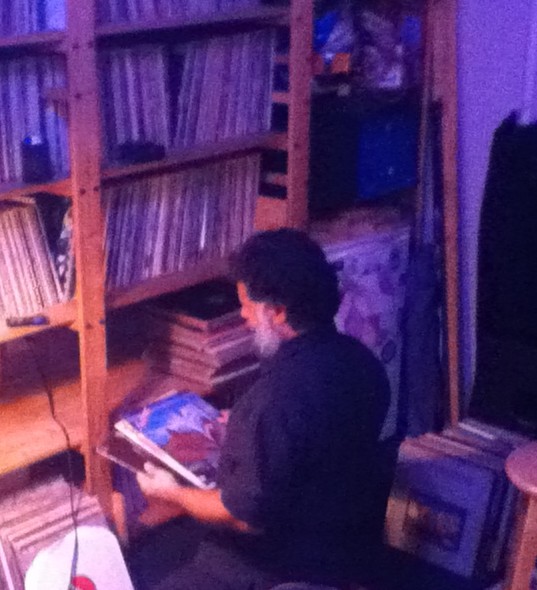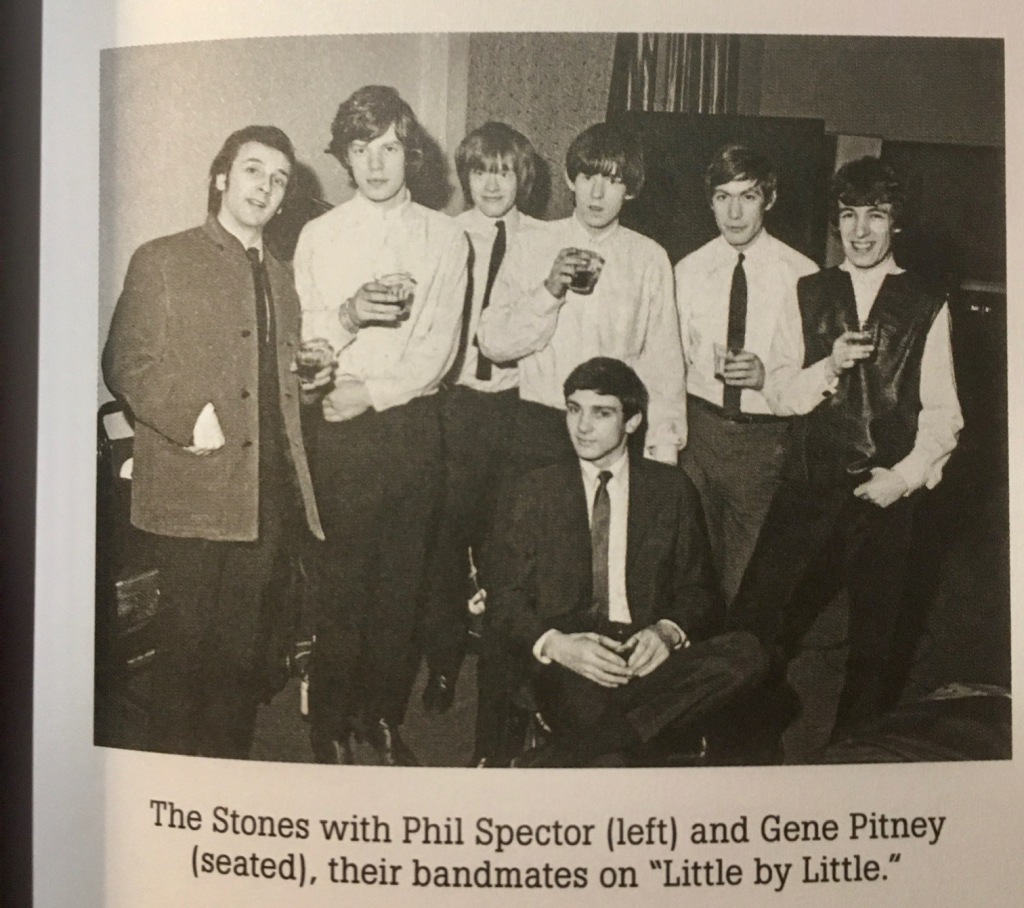Once upon a time, way back in the 1980’s, I made mix tapes for a girlfriend of mine. We dated for about 5 years, and so there ended up being over 100 of these cassette mixes. She understood exactly what I was trying to do, which was to communicate through the songs, and with her encouragement and appreciation I kept on, knowing I had an audience of at least one. This is when I started to take mixes very seriously.
When I first started this series, I didn’t even have my own cassette recorder. I went to my friend Nick and asked if I could use his- I brought a pile of LP’s, and even used some of his. He’s the one who gave the series its name.
At a certain point I began to use whole albums as the basis for a mix. I kept lists of songs I wanted to use, and then when I had enough I’d start to arrange the songs. In January of 1986 I had wanted to use a song from the Blind Faith album. Then, I decided I wanted to use two songs from it. Then I thought, why don’t I use the whole album, even if some of the songs might not normally make it to the list on their own? Thus began a concept that I feel is unique and one that, 35 years later, I continue to explore.
My girlfriend’s 19th birthday was approaching, and so I had a few birthday songs in mind. The idea was to place all the Blind Faith songs on the mix, in the same order as the album, with the original list of birthday songs in between. Later, I even thought of it as a theme and a sub theme- very serious stuff that at least my girlfriend got; a random listener might or might not notice- but the juxtaposition of songs thrilled my imagination.
On this mix the birthday songs in between didn’t seem to have much musical similarity to the Blind Faith songs, but they had a continuity of their own which made it valid. I used 7 songs from the Basement Tapes, which my girlfriend had recently bought for me, including both Bob Dylan and The Band’s material, and a few other random songs. The funny thing is, after hearing these songs in this particular order for so many years now, it seems like they belong together.
I didn’t realize it then, but now I describe it like this- I was presenting the Blind Faith album as a work of art, and the other songs were inhabiting and informing that work of art- separating the songs on the album and yet keeping the same running order. Since cassettes had a side one and side two, there was just enough space on each side to place two songs in between each song from an album.
This wasn’t the first time I had used this concept for this series- previously I had done similar mixes based on other albums- McCartney, Plastic Ono Band, Blue, A Little Touch of Schmilsson in the Night, Days of Future Passed, Don Juan’s Reckless Daughter, Blue Moves, etc. Most of these had the concept intact, but lacked cohesiveness.
If I look at the tapes today, I can follow the various artist obsessions I went through back then- Bob Dylan, obviously; Harry Nilsson, Joni Mitchell, Laura Nyro, Marc Bolan, The Beach Boys, Elton John, Leonard Cohen, Frank Zappa. The series led me to this mix, where the songs in between complimented the songs on the album, and told a story of their own.
Here’s the song list from that first cohesive one- I have since gone back and recreated the mix on cd, even though the 90 minute cassette gave me an extra 10 minutes, and some songs would not fit on the cd.
- Had to Cry Today– Blind Faith (Steve Winwood.) My girlfriend had just started going to college about 100 miles away, and it was the first time we had been away from each other for long periods of time. So we were sad, and the mixes became an even more important form of communication while we were apart. This song is many things at once- a heavy electric guitar workout featuring Steve Winwood and Eric Clapton repeating a powerful riff over and over, which then gives way to a gentle song about being sad enough to cry.
- Birthday– The Beatles. An obvious birthday choice, and because it is also based on a riff it fits nicely here.
- Million Dollar Bash– Bob Dylan. We were big Bob Dylan fans- I was kind of obsessed with discovering all of his albums, and luckily my girlfriend really liked him too. A silly, nonsensical song about a big (birthday?) party- so much fun!
- Can’t Find My Way Home-Blind Faith. (Steve Winwood.) This was probably the song I had originally wanted to use on the mix, which led me to use the entire album.
- Clothes Line Saga– Bob Dylan. Another light hearted song, supposedly influenced by Ode to Billie Joe, which was a big hit on the radio at the time the Basement Tapes were recorded. It seems to point fun at the mundane subject matter of that song, where Bobbie Gentry describes everyday scenes, with a heavy subject lurking somewhere in the background. The Saga randomly mentions January 30th, which was my girlfriend’s birthday.
- Katie’s Been Gone– The Band. One of their sweetest and saddest songs, sung beautifully by Richard Manuel. It captured perfectly a lot of what I was feeling then.
- Apple Suckling Tree– Bob Dylan. One of Bob’s happiest songs, the lyrics are at least partially unintelligible, and yet they make perfect rhythmic sense. Bob plays piano, and Garth Hudson displays his awesome talents on organ.
- Well Alright– Blind Faith (Buddy Holly.) A faithful and reverent cover of this rocknroll classic, with a polyrhythmic riff added at the beginning and the end for good measure.
- Long Distance Operator– The Band (Bob Dylan.) In those days I used to work at the old Sears in Union City, in the customer service department- a lovely job. I used to call my girlfriend from there, long distance, on Sears’ dime. Dylan wrote these simple yet profound lyrics about the good old days before cell phones, and Richard Manuel gives them a comic tone. Robbie Robertson’s guitar is BLASTING.
- Operator- Grateful Dead (Ron “PigPen” McKernan.) Another song about a forgotten part of life, pre- cell phones. Quintessential PigPen.
- Presence of the Lord– Blind Faith (Eric Clapton.) A sublime song about faith, blind or not.
- The Weight– The Band. A hymn, not merely a song. It has become all the more poignant to me just recently, as we lost Jack, our dog, to time.
- Sea of Joy– Blind Faith (Steve Winwood.) This song would probably never have been chosen for one of these mixes outside of the context of the Blind Faith album, and yet it adds so much.
- You Ain’t Goin’ Nowhere– Bob Dylan. I was used to the version on Greatest Hits Vol. II with Happy Traum singing harmony on a wonderful melody with slightly different lyrics. This version is more deadpan, but just as sweet.
- The Low Spark of High Heeled Boys– Traffic (Steve Winwood.) I think I used this song because it was familiar and well known, and it would offset side two of Blind Faith, most of which is obscure and far out.
- Bluebird*– Buffalo Springfield. (Steve Stills.) This was the long version that was released on their Retrospective album, later covered by Joe Walsh and the James Gang.
- Do What You Like– Blind Faith (Ginger Baker.) A bombastic song in 5/4 time signature, this unfolds as a solo vehicle for Steve Winwood (organ) Clapton (guitar) Rick Grech (bass) and mostly, Ginger Baker (drums.)
- Please Mrs. Henry*– Bob Dylan. A perfect song to wrap up this mix- the irreverent silliness of it picking up on the humorous ending to the previous song, after 15 minutes of ‘serious’ music.
Perhaps the most important thing is that after listening to the songs in this order, the Blind Faith album has been presented and elevated, the birthday songs have done their job, and there’s something new in the world- a personal musical letter. The Gestalt theory says that in art, the whole is greater than the sum of its parts, and that’s what’s happening here.
The songs marked with * were deleted from the cd version.












